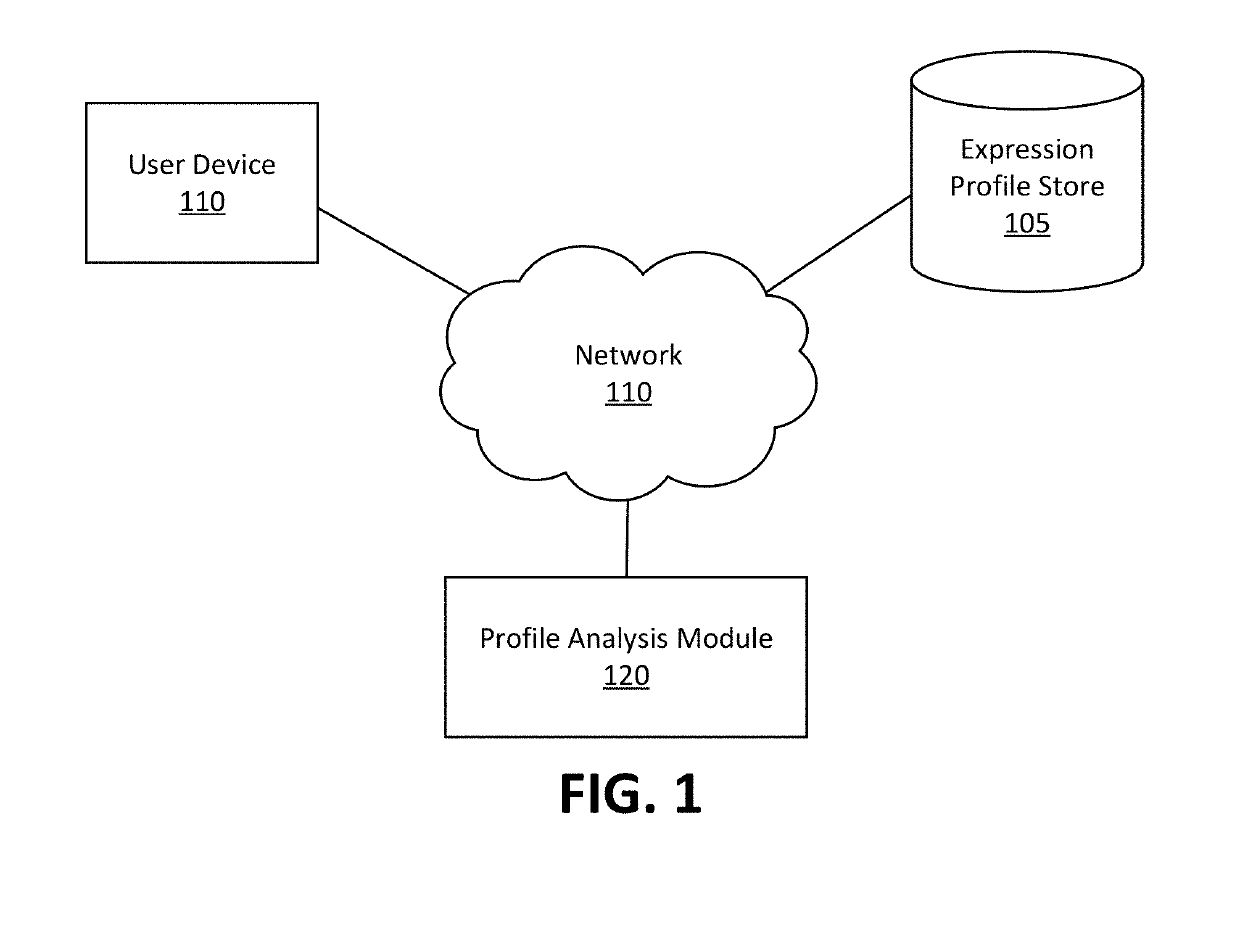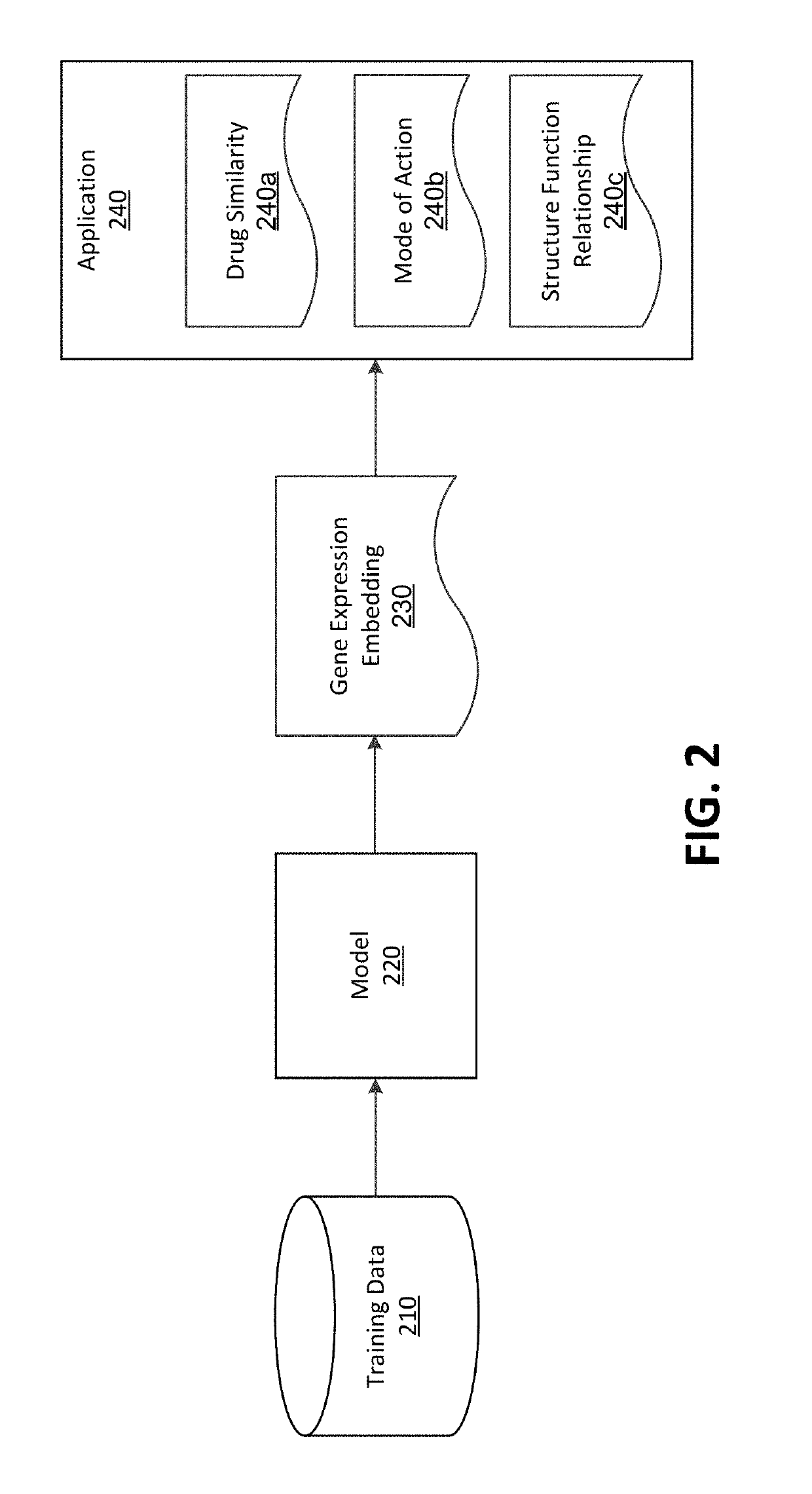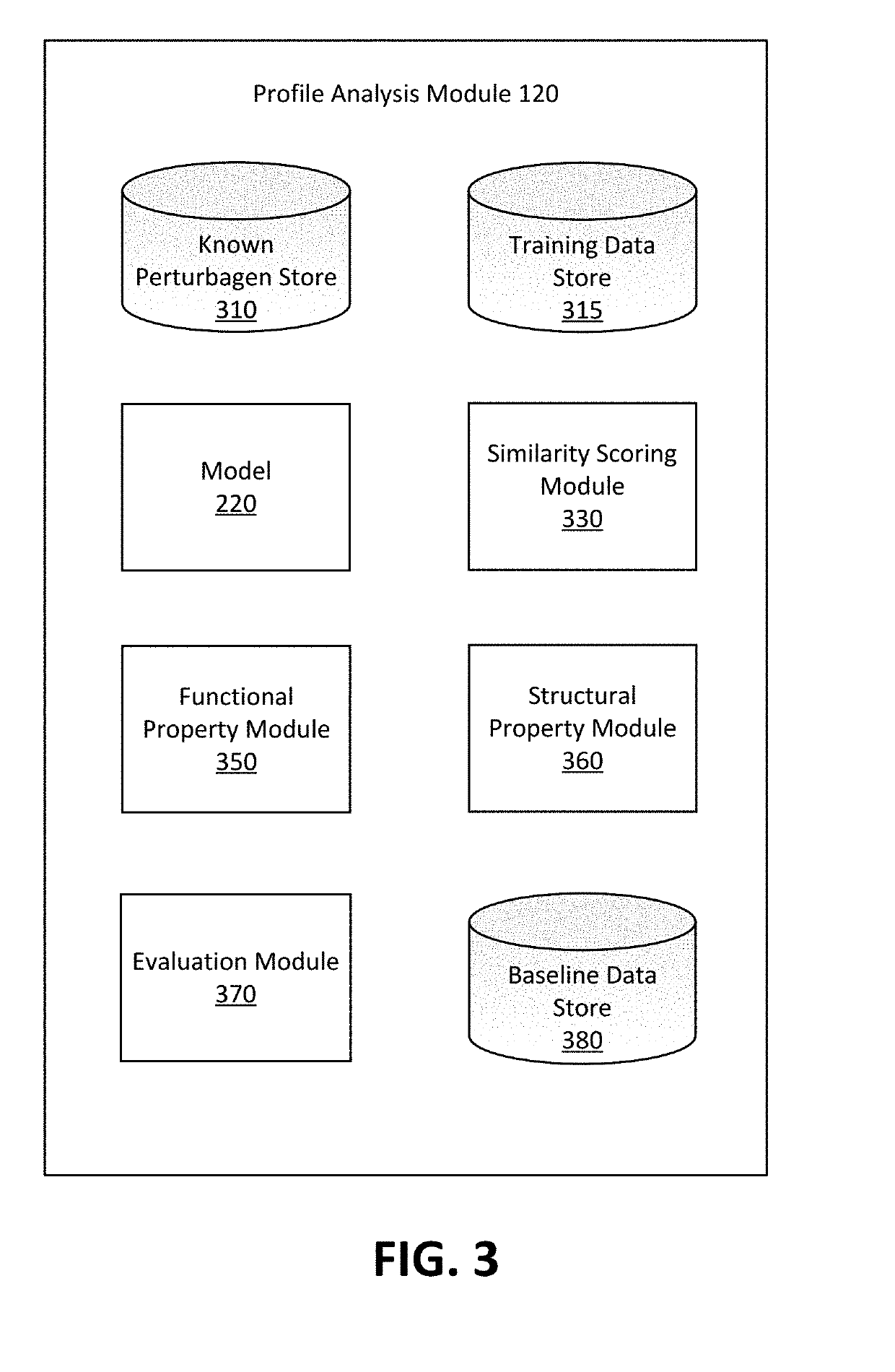Drug repurposing based on deep embeddings of gene expression profiles
a gene expression profile and gene expression technology, applied in the field of drug repurposing based on gene expression data, can solve the problems of limited insight provided by measures of structural similarity, and the standard measures of this approach only poorly predict pharmacological similarities between compounds, so as to confirm pharmacological similarity, accurately and effectively predict pharmacological similarities, and accurate insights into structure-function relationships
- Summary
- Abstract
- Description
- Claims
- Application Information
AI Technical Summary
Benefits of technology
Problems solved by technology
Method used
Image
Examples
example i
VI.A Example I
[0091]FIG. 10A is a table describing the performance of embeddings and baselines for queries of the profiles of the same perturbagen, by perturbagen group, according to an embodiment. FIG. 10B is a graph of the performance of embeddings and baselines for queries of the profiles from the same perturbagen, by perturbagen group, according to an embodiment.
[0092]For all perturbagen groups, the embeddings exhibited improvements over the baseline methods. Performance of the model on genetic manipulations is slightly better than on small molecules, but even when the evaluation was restricted to small molecules, the embeddings ranked the positive within the top 1% in almost half (48%) of the queries, and the AUC was above 0.9. These results suggest that the embeddings effectively represent the effects of the perturbagen with some invariance to other sources of variation, including the variance between biological replicates, as well as between cell lines, doses, post-treatment ...
example ii
VI.B Example II
[0093]FIG. 10C is a table describing the performance of embeddings and baselines for queries of the profiles of the same set of biological replicates, by perturbagen group, according to an embodiment. For z-scores, results using Euclidean distances are reported. FIG. 10D is a graph of the performance of embeddings and baselines for queries of the profiles from the same set of biological replicates, by perturbagen group, according to an embodiment.
[0094]In this evaluation, positives were profiles that were biological replicates of the query perturbagen and negatives were select from among the profiles that were not. Both the embeddings and baseline methods performed better on this evaluation, but the embeddings still performed better than the baselines. The difference in performance between the biological replicate queries and the same-perturbagen queries was larger for the baselines than the embeddings. This may also reflect a level of invariance to sources of variati...
example iii
VI.C Example III
[0095]FIG. 10E is a table describing the performance of embedding and baselines on queries of similar therapeutic targets, protein targets, and molecular structure, according to one embodiment. FIG. 10F is a graph of the performance of embedding and baselines on queries of similar therapeutic targets, protein targets, and molecular structure, according to one embodiment.
[0096]The embedding performed better than the baselines for all query types. The gap between the embeddings and baselines was largest for queries of structural similarity. Structurally similar compounds (the positives for each query) tend to have correlated expression profiles, but the correlations are weak. One possible explanation for this result is that the embedding is trained to cluster together profiles corresponding to the same compound, which is equivalent to identity of chemical structure. The greater similarities in embedding space between structurally similar compounds relative to structura...
PUM
| Property | Measurement | Unit |
|---|---|---|
| Time | aaaaa | aaaaa |
| Structure | aaaaa | aaaaa |
| Entropy | aaaaa | aaaaa |
Abstract
Description
Claims
Application Information
 Login to View More
Login to View More - R&D
- Intellectual Property
- Life Sciences
- Materials
- Tech Scout
- Unparalleled Data Quality
- Higher Quality Content
- 60% Fewer Hallucinations
Browse by: Latest US Patents, China's latest patents, Technical Efficacy Thesaurus, Application Domain, Technology Topic, Popular Technical Reports.
© 2025 PatSnap. All rights reserved.Legal|Privacy policy|Modern Slavery Act Transparency Statement|Sitemap|About US| Contact US: help@patsnap.com



